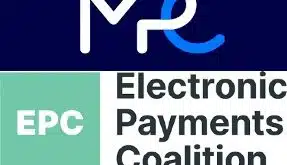By Jim Daly
@DTPaymentNews
As retailers such as Wal-Mart Stores Inc. and Kohl’s Corp. ramp up their mobile wallets, the tech companies that offer general-purpose mobile wallets aren’t sitting still. In particular, Alphabet Inc.’s Android Pay is adding capabilities and expanding abroad, an Alphabet executive tells Digital Transactions News.
“There are now millions of locations across the nine countries where Android Pay has been launched that already accept tap and pay,” Gerardo Capiel, Android Pay product manager, says by email. “And our in-app service has hundreds of merchants, with more being added every day.”
Android Pay’s newest country is Japan, where it rolled out in December. In addition to that country and the United States, the service operates in the United Kingdom, Singapore, Australia, Hong Kong, Poland, New Zealand, and Ireland. Android Pay added in-app payments in 2015.
Originally known as Google Wallet, which is now a person-to-person payments service, Android Pay is distinct from rivals such as Apple Inc.’s Apple Pay in that it uses host card emulation. HCE technology leverages near-field communication and allows contactless payment transactions to occur between NFC-capable smart phones and point-of-sale terminals without requiring access to the secure element in the mobile device, either as a SIM card or an embedded chip.
By bypassing a mobile phone’s secure element and emulating in the cloud the hardware that holds payment credentials, HCE frees mobile-wallet providers from the fees and terms the mobile network operators or phone manufacturers that control the secure element can impose. A small, Austin, Texas-based startup called SimplyTapp Inc. developed the original HCE technology. Google, now the main subsidiary of Mountain View, Calif.-based Alphabet, included HCE in late 2013 in Android 4.4, also known as KitKat, at the time of the latest update of its mobile operating system.
“[HCE] allows developers to create mobile apps that communicate with NFC readers in the same way that a plastic contactless card tapped against an NFC reader would,” says Capiel. “Unlike other services, HCE enables Google to offer Android Pay on hundreds of different supported Android devices, and for us that is important.”
HCE also makes it possible for Google to take the wallet beyond pure payments. “We’ve launched new HCE-based protocols for transmitting loyalty cards and offers to merchants at the [POS] terminal,” says Capiel, adding that the wallet is “creating a more engaging experience for shoppers and merchants alike.”
Richard K. Crone of San Carlos, Calif.-based Crone Consulting LLC, who works closely with mobile-payments clients, says that “if you want to append value-added services that distinguish Android applications from iOS [Apple’s mobile operating system], you’re going to use host card emulation. You have the power of the cloud behind every transaction.”
Crone adds that with HCE, wallet providers can provide “an infinite number of new services, loyalty, and offers. There’s no better place in the promotional stream to link an offer and motivate someone to buy than right before or after payment.”
Google enabled Android Pay to work on the mobile Web last September, and in October it linked the service with Visa Checkout and Masterpass, the online and mobile-payment services from Visa Inc. and Mastercard Inc.
Capiel declined to reveal Android Pay transaction data.




